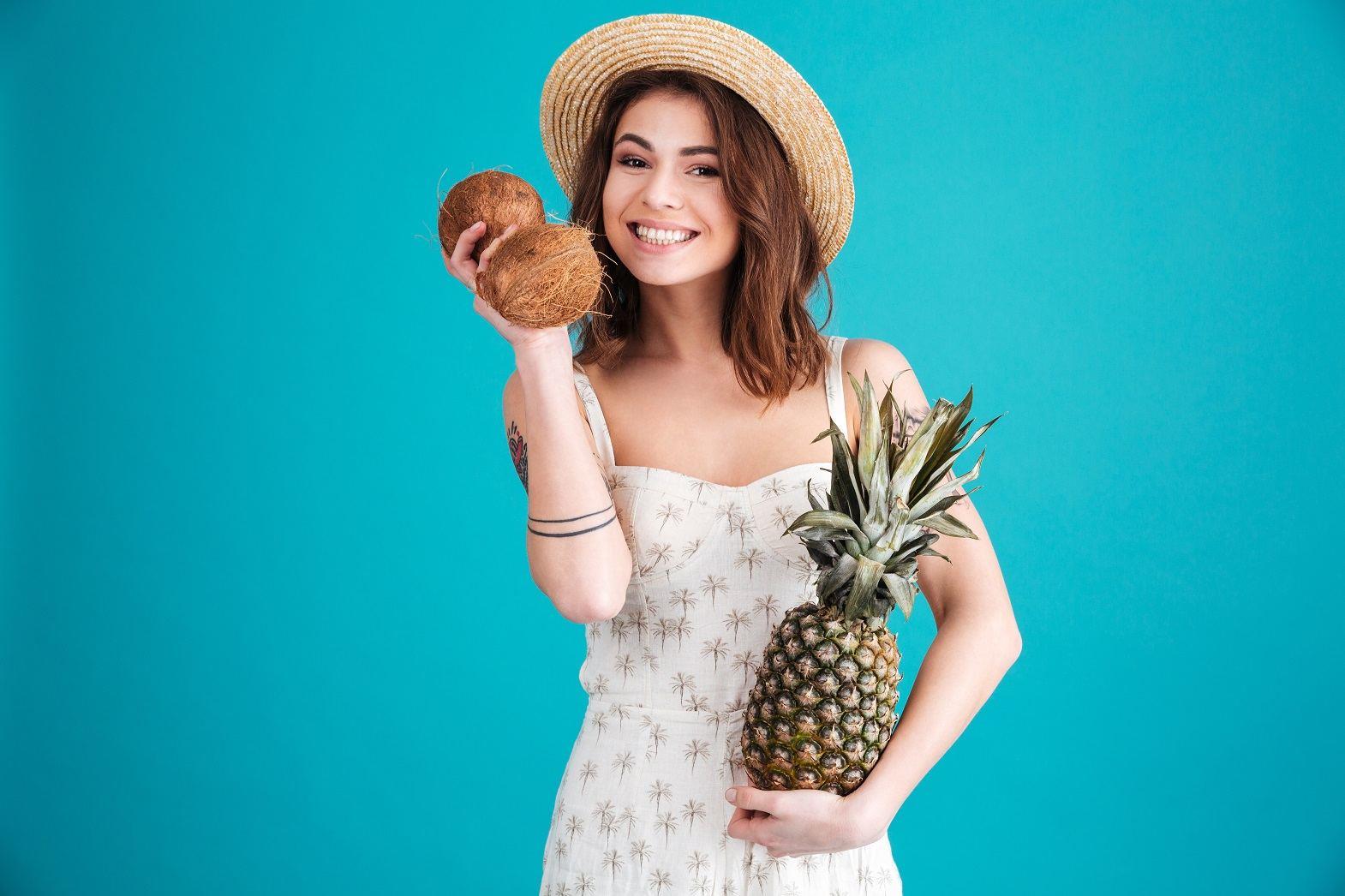Health-conscious people would love to have fruits in their dessert. And if they are also fashion-savvy, then these fabrics are for them. Discarded fruit wastes can be refined to make new, trendy, and eco-friendly fashion fabrics.
Fruits are all in the trend, and in a big way! Fruity fashion is the latest and juicy trend sweeping around. Be it fruits inspired fashion apparels or accessories; it's the fruity trend that is setting the fashion industry on fire. Apart from ruling the runways, inspiring designers, and fashionistas, fruits have still more to add. The latest addition is fibers made from fruit wastes that are woven into fabrics. Agricultural wastes from fruits such as banana, pineapple, and coconut can be converted into fabrics used for making apparels, home textiles, non-woven, and other industrial fabrics.
Tangy Pineapple:
Pineapples are rich in lignin and cellulose. In the fruit, only 52% is used for edible purposes and for making jams, while the remaining 48% is dumped as organic waste. The discarded part of the fruit contains rich cellulose and lignin, which is generally wasted and also makes its decomposition difficult. Fibers can be extracted from the discarded portion of the fruit, which can be used for making fabrics. Fibers extracted from the waste of pineapple fruits are blended with polyester or silk to make organic fabrics with a silky texture. These fibers are called 'pina,' which in Spanish means pineapple.
The process of extracting fibers and converting them into fabrics involves retting, decortications, combing, etc., taking 5-7 days for completion. Lots of chemicals are used in the process owing to its sticky nature. Extracted fibers are handspun into ivory-shaded, naturally glossy fabric. These fibers are very soft and are easily broken, making the process slow and time-consuming. To make them strong, they are also blended with other fibers. Blended with silk, they are known as pina seda. It is very soft and lustrous. These fabrics are lightweight and easy to maintain. Pineapple fibers are softer in nature and blend well with other fibers. Moreover, fabrics made from pineapple fibers have an elegant appearance.
The Banana Fashion:
Banana fibers are biodegradable and extracted from the barks of the banana tree. These fibers consist of thick-walled cell tissues bonded by natural gums. Similar in appearance to bamboo and ramie fibers, banana fibers surpass the former two in performance due to their fineness and tensile strength. Approximately 37 kg of a banana stem yields 1 kg of good quality fiber. The outer layer of the plant provides coarse fibers that are very brittle. Typically, two to three outer sheaths are removed, and the intermediate layers are used. The innermost sheaths are also discarded as they contain pulpy matter.
Performance-wise, banana fibers outperform bamboo and ramie fibers. They possess virtues such as high tensile strength, luster, lightweight properties, and good moisture absorption. They have a good luster and drape. The high water-absorbing nature of this fabric makes clothing made from it cool to wear.
Coconut Fiber Fabrics:
Many people wonder whether a coconut is a fruit, nut, or vegetable. A coconut is a drupe, and drupes are fruits. Known as the "tree of life," the coconut tree is beneficial to humans in various ways. Coconut fibers have a high lignin content and low cellulose. Through the retting process, coconut husks are soaked in water while the microorganisms in the water loosen the fibers from the coconut hull. These fibers are then extracted and spun into durable yarn. Primarily with a brownish hue, these fibers are used in mats, rugs, and even apparel.
Coconut fibers are lightweight, resilient, and durable. Fibers extracted from activated carbon of coconut shells are known as cocona fibers. These fibers are blended into polyester fibers to enhance their wicking and absorbing capacities. Coconut fibers have the ability to protect the wearer against UV rays. They absorb body odor and retain it until the fabric is washed.
Fruit fibers are embraced by top fashion houses, always seeking innovations in fabrics and fashion. As these processes are not practiced on a large scale, they may be a bit expensive. However, while wearing them, one can feel the exotic luxury, making their price immaterial.
References:
Treehugger.com
Craftingagreenworld.com








Comments